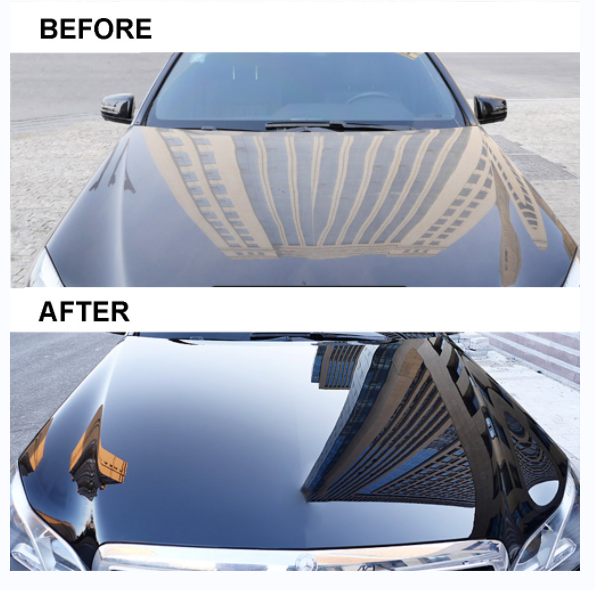Choose expert-installed paint protection film for a ultra-clear layer of protection.
Choose expert-installed paint protection film for a ultra-clear layer of protection.
Blog Article
A Comprehensive Guide to the Kinds of Ceramic Finish on the Market
Ceramic coatings have arised as a critical solution across various sectors as a result of their unique residential or commercial properties and applications. From silica-based formulas known for their toughness to crossbreed choices that combine several advantages, the choices offered can be overwhelming. Comprehending the subtleties of each type, including their particular advantages and optimal usage situations, is crucial for making notified choices. As we explore the unique qualities and applications of these coatings, the effects for efficiency and durability become increasingly apparent, questioning concerning which type may best fit your needs.
Recognizing Ceramic Coatings
Ceramic layers are sophisticated protective solutions that have actually obtained appeal in numerous sectors, especially in automobile and aerospace applications. These layers include a liquid polymer that, when treated, creates a resilient, hydrophobic layer on the surface of the substrate. This layer supplies enhanced resistance to environmental contaminants, UV radiation, and chemical exposure, thereby prolonging the life and visual allure of the underlying product.
The fundamental element of ceramic coverings is silica, which adds to their firmness and longevity. The application process usually entails surface area prep work, application of the finish, and treating, which can be attained via warm or UV light. As soon as treated, ceramic finishes show extraordinary bonding properties, permitting them to adhere strongly to a selection of surfaces, consisting of metals, plastics, and glass.
Along with their protective attributes, ceramic finishings likewise provide ease of upkeep. Their hydrophobic nature lowers the adherence of dirt and grime, making cleaning simpler and much less frequent. In general, the fostering of ceramic finishes stands for a significant improvement in surface protection innovation, supplying both practical and visual benefits across numerous markets.
Types of Ceramic Coatings
Different kinds of ceramic layers are readily available, each developed to fulfill specific efficiency demands and applications - Auto Detailing. The most common types consist of:
Silica-based Coatings: These coverings mostly are composed of silicon dioxide and are understood for their durability and chemical resistance. They are extensively used in auto and industrial applications.
Titanium Dioxide Coatings: Renowned for their photocatalytic properties, titanium dioxide finishings are usually used in environments where self-cleaning and antifungal homes are preferable, such as in building materials and vehicle coatings.
Zirconia Coatings: Characterized by their high-temperature security and thermal resistance, zirconia finishes are made use of in applications such as wind turbine engines and high-performance automobile parts.
Alumina Coatings: Showing excellent hardness and thermal security, alumina coatings are frequently utilized in wear-resistant applications, including cutting tools and industrial equipment. - ceramic coating sarasota
Hybrid Coatings: Integrating the homes of various materials, hybrid coverings offer improved efficiency attributes, making them ideal for distinct and demanding applications.
Each sort of ceramic coating offers distinctive purposes, allowing individuals to select the most appropriate service based upon details ecological conditions and performance needs.
Benefits of Ceramic Coatings
Coatings play an important duty in improving the efficiency and durability of surfaces across different industries. Ceramic coatings, specifically, offer numerous benefits that make them increasingly prominent among producers and consumers alike. One of the main advantages is their extraordinary resilience. These finishings are immune to scrapes, chemicals, and UV rays, guaranteeing that the underlying surface area remains protected in time.
Along with sturdiness, ceramic finishings offer superb hydrophobic homes, permitting easy cleansing and upkeep. This water-repellent nature lessens the adherence of dirt, gunk, and various other impurities, which can extend the visual charm and performance of the surface area. Moreover, ceramic finishings can considerably boost thermal resistance, making them ideal for applications that sustain check this heats.

Application Process
When applying ceramic layers, a precise technique is important to accomplish optimal results. A tidy surface guarantees proper adhesion try this web-site of the coating.
Once the surface area is prepped, the following step is to use the ceramic layer. The finishing needs to be used in thin layers, as thicker applications can lead to uneven coatings.
After application, the coating requires a certain treating time, normally varying from a few hours to a full day, depending on the product. Adhering to these steps vigilantly will optimize the effectiveness and long life of the ceramic finishing, supplying a resilient safety layer for the surface.
Upkeep and Long Life
To make sure the durability and performance of a ceramic coating, regular maintenance is important. Ceramic coatings, recognized for their toughness and protective top qualities, require specific treatment routines to maximize their lifespan and efficiency. The initial step in maintenance involves routine washing with pH-neutral soap, staying clear of extreme chemicals that can weaken the layer. It is advisable to wash the car consistently, ideally every two weeks, to protect against the build-up of pollutants that might compromise the coating's integrity.
Along with routine cleaning, regular inspections are critical. Try to find indications of wear or damages, such as hydrophobic homes diminishing or surface flaws. If needed, a light gloss might be related to revitalize the coating without removing it away.
Additionally, the application of a booster spray can improve the covering's hydrophobic results and recover its gloss. This is especially advantageous for coatings that have remained in use for a prolonged period. Ultimately, by adhering to these upkeep techniques, one can significantly expand the life of a ceramic finishing, making sure that it continues to offer optimal security versus environmental variables and preserve the visual allure of the car.
Final thought

Report this page